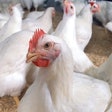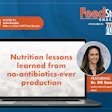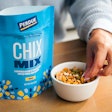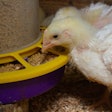As the U.S. heads towards antibiotic-free pork and chicken, perhaps there is scope in studying what happened in the EU when the same process was undertaken. On a personal note, it so happened that I moved from the U.S. to the EU just about when antibiotics were banned there, so I have some first-hand experiences to share. To this end, there are three lessons I learned; the hard way, I must admit!
1. Health status is more important than nutrition
Antibiotics used for growth-promoting purposes work best when the farm health status is below average. Thus, the best way to counteract the negative effects of removing in-feed antibiotics is to enhance farm hygiene and biosecurity. In my experience, most farms in the U.S. enjoy an above average level of health status, so the step to a high(er) level will not be as painful.
2. Antibiotic use for therapeutic reasons will increase
Although overall antibiotic use will decrease, those prescribed to treat diseases will probably increase, at least initially. That use eventually will have to decrease, to a certain point, especially as farm health status increases. There is a danger here to ignore the need to continuously strive for better biosecurity (prevention) instead of relying on therapeutic use of antibiotics (treatment).
3. Nutrition as we know it will have to change
Fiber is no longer the enemy. Instead, certain types of fiber are one of the best ways to control pathogenic microflora. On the other hand, (excess) protein is number one enemy, whereas crystalline amino acids can help in sustaining animal performance. As for additives, I am not convinced there is a single product that can replace antibiotics on an equal basis. Instead, according to formulation philosophy followed, a combination of additives is required.
At the end, even after our best efforts, we might have to accept a slighter reduced efficiency of production if the alternative is increased cost of production that cannot be absorbed by the whole food chain.


















